Цей токен недоступний на OKX Біржі.

Robinhood
Ціна Steal from the rich

HkRddr...jDjc
$0,00019778
+$0,000016928
(+9,36%)
Зміна ціни за останні 24 години
USD
Не вдалося знайти. Перевірте правильність написання або спробуйте інше.
Який ваш сьогоднішній прогноз щодо Robinhood?
Поділіться тут своїми настроями, поставивши великий палець угору, якщо передбачаєте підйом монети (бичачу поведінку), або великий палець униз, якщо передбачаєте спад (ведмежу).
Голосуйте, щоб переглянути результати
Застереження
Соціальний вміст на цій сторінці (далі — «Вміст»), зокрема твіти й статистика від LunarCrush, надається третіми сторонами на умовах «як є» виключно з інформаційною метою. Компанія OKX не гарантує якість або точність Вмісту, який не відображає її погляди. Він не має розцінюватися як (i) інвестиційна порада чи рекомендація; (ii) пропозиція або заохочення купувати, продавати чи утримувати цифрові активи; (iii) фінансова, бухгалтерська, юридична чи податкова консультація. Цифрові активи, зокрема стейблкоїни й NFT, пов’язані з високим ступенем ризику, а їх вартість може сильно коливатися. Ціна й показники ефективності цифрових активів не гарантуються та можуть змінюватися без попередження.
OKX не надає рекомендацій щодо інвестицій або активів. Ви повинні ретельно зважити, чи підходить вам торгувати цифровими активами чи утримувати їх, з огляду на свій фінансовий стан. Щодо ваших конкретних обставин порадьтеся з юридичним, податковим чи інвестиційним фахівцем. Щоб дізнатися більше, перегляньте наші Умови використання й Попередження про ризики. Використовуючи вебсайт третьої сторони (далі — «Сторонній вебсайт»), ви погоджуєтеся, що будь-яке використання Стороннього вебсайту регулюється умовами Стороннього вебсайту. Якщо це прямо не зазначено в письмовій формі, компанія OKX і її партнери (далі — OKX) жодним чином не пов’язані з власником або оператором Стороннього вебсайту. Ви погоджуєтеся, що OKX не несе відповідальності за жодні втрати, збитки й інші наслідки, що виникають у результаті вашого використання Стороннього вебсайту. Зверніть увагу, що використання Стороннього вебсайту може призвести до втрати або скорочення ваших активів. У деяких юрисдикціях продукт може бути недоступний.
OKX не надає рекомендацій щодо інвестицій або активів. Ви повинні ретельно зважити, чи підходить вам торгувати цифровими активами чи утримувати їх, з огляду на свій фінансовий стан. Щодо ваших конкретних обставин порадьтеся з юридичним, податковим чи інвестиційним фахівцем. Щоб дізнатися більше, перегляньте наші Умови використання й Попередження про ризики. Використовуючи вебсайт третьої сторони (далі — «Сторонній вебсайт»), ви погоджуєтеся, що будь-яке використання Стороннього вебсайту регулюється умовами Стороннього вебсайту. Якщо це прямо не зазначено в письмовій формі, компанія OKX і її партнери (далі — OKX) жодним чином не пов’язані з власником або оператором Стороннього вебсайту. Ви погоджуєтеся, що OKX не несе відповідальності за жодні втрати, збитки й інші наслідки, що виникають у результаті вашого використання Стороннього вебсайту. Зверніть увагу, що використання Стороннього вебсайту може призвести до втрати або скорочення ваших активів. У деяких юрисдикціях продукт може бути недоступний.
Інформація про ринок Robinhood
Ринкова капіталізація
Ринкова капіталізація обчислюється множенням циркулюючої пропозиції монети на останню ціну.
Ринкова капіталізація = циркулююча пропозиція × остання ціна
Ринкова капіталізація = циркулююча пропозиція × остання ціна
Мережа
Базовий блокчейн із підтримкою безпечних децентралізованих транзакцій.
Циркулююча пропозиція
Загальна кількість монет, яка є на ринку у відкритому доступі.
Ліквідність
Ліквідність — показник того, наскільки просто можна купити/продати монету на DEX. Що вища ліквідність, то простіше здійснити транзакцію.
Ринкова капіталізація
$203,93 тис.
Мережа
Solana
Циркулююча пропозиція
1 000 000 008 Robinhood
Холдери токена
226
Ліквідність
$35,09 тис.
Обсяг за 1 г
$4,22 млн
Обсяг за 4 г
$13,71 млн
Обсяг за 24 г
$13,71 млн
Steal from the rich — новини
Наведений нижче вміст отримано з .

Любов має егоїстичну сторону,
Іноді вони змушують йти на жертви.
Це воістину жахливе кохання.
"CLOBs на краплях"
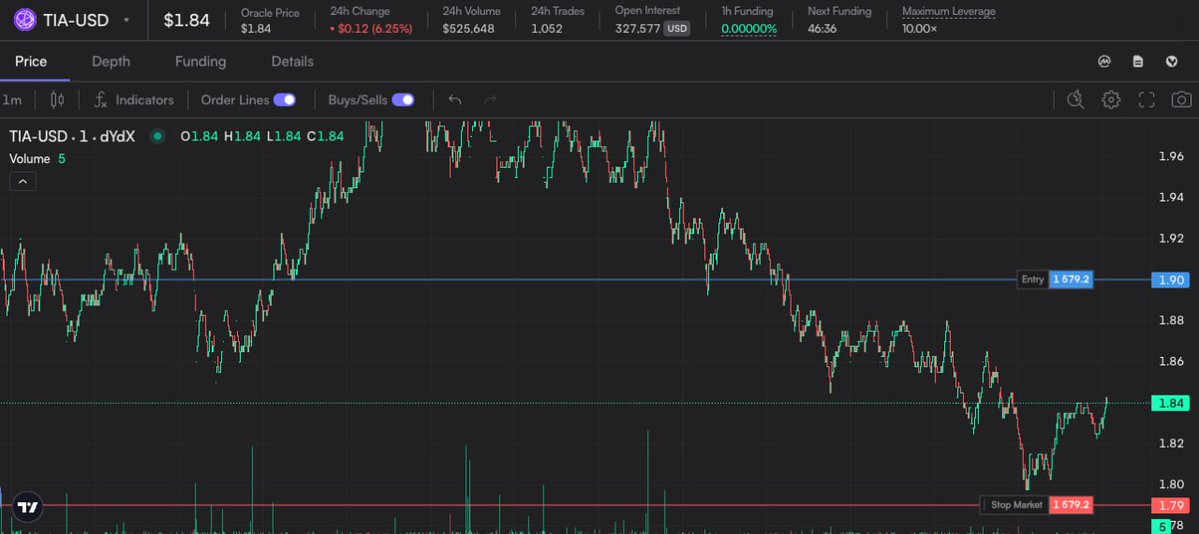

Professor Jo 🐙
<CLOBs on Blobs 🦣 and Celestia’s Comeback>
In the second half of 2023, modular blockchains and rollups were at the center of crypto’s dominant narrative. However, as time passed, the narrative lost momentum due to a lack of users and decreasing transaction activity. Celestia’s blobspace also remained underutilized for a period. But things are changing again.
A new narrative, “CLOBs on Blobs,” is driving real demand for Celestia’s data availability (DA) layer—not just hype, but actual on-chain traffic. I sat down with Nick White from @celestia, to discuss their long-term vision, technical philosophy, and the structural changes behind this renewed momentum.
1. Celestia’s Core Principle: Verifiability
Throughout the interview, @nickwh8te emphasized that “the essence of blockchain is verifiability.” DA is not just about storing data—it's a foundational component that ensures blockchain security. Celestia was designed so that anyone can independently verify data, relying not on centralized structures like DACs (Data Availability Committees), but instead on Data Availability Sampling (DAS).
To clarify: DACs rely on a small group of servers to store off-chain data and sign off on its availability. In contrast, DAS allows data to be verified via random sampling, without requiring high bandwidth or powerful hardware. This concept was introduced in a 2018 paper co-authored by Celestia co-founder Mustafa Al-Bassam and Ethereum’s Vitalik Buterin—and Celestia is the first project to bring it to mainnet.
2. Rollups Aren’t Dead—Real Demand Is Emerging
Interest in rollups faded by late 2023. As blob usage on Celestia declined, many began to question whether the rollup thesis was over. Nick countered this sentiment by referencing the Gartner Hype Cycle: "Every technology goes through a phase of disillusionment." Celestia, he said, is now entering the early stage of actual adoption.
He pointed to a growing trend. Traditional financial institutions and crypto exchanges are expanding into on-chain trading. Robinhood launched tokenized stock trading on @arbitrum, Coinbase introduced its L2 chain Base, Kraken unveiled Ink, and Worldcoin launched World Chain—all of them rollup-based. As these platforms scale, demand for a robust DA layer like Celestia becomes increasingly critical.
Nick noted that rollups offer what general-purpose L1s cannot: low latency, customizable execution environments, and independent economic models. These advantages require strong DA infrastructure to maintain performance and trust—which is precisely where Celestia fits in.
Nick also shared a compelling vision for Celestia’s long-term revenue model. While it currently generates income through DA fees, he emphasized that future value will come from shared revenue with rollup execution layers. As native rollups on Celestia proliferate and build their own execution environments, a portion of the economic activity they generate could be shared with the DA layer itself—similar to how Solana captures value from its execution layer.
This approach positions Celestia not just as infrastructure, but as a platform that captures value across the entire rollup ecosystem. Nick highlighted this structural design as a key reason to be optimistic about Celestia’s long-term future—beyond short-term market cycles.
As a prime example, Nick mentioned Robinhood’s tokenized stock rollout as “just the beginning.” While Ethereum DA may be sufficient at first, growing user activity will eventually strain its capacity—opening the door for Celestia to become the go-to alternative. Several TradFi firms are exploring decentralized infrastructure for stocks, options, and derivatives, all of which demand low latency, high throughput, and verifiability. According to Nick, Celestia is best positioned to meet all three.
3. CLOB on Blobs: The Next Wave of Blob Demand
Blob usage on Celestia has surged recently, driven by the emergence of CLOB-based on-chain exchanges. Platforms like Hyperliquid and Hibachi are building decentralized exchanges with performance comparable to centralized ones—including fine-tuned price discovery, low-latency order matching, and complex fee models. These require massive data throughput and can only operate on rollup infrastructure.
Celestia currently offers 1.33 MB/s of DA throughput (roughly equivalent to 10,000 TPS) and is targeting scalability of up to 200,000 TPS through future upgrades. As a result, blob demand has tripled in the past three months. Beyond Hibachi, other CLOB or options-focused rollups like Rise and Derive are also integrating—or actively evaluating—Celestia.
4. Expanding $TIA Utility and Controlling Inflation
Celestia’s native token, $TIA, was initially used solely for paying blob fees. But the upcoming Lotus upgrade (expected in July) will significantly expand its utility. With Hyperlane bridging support, $TIA will become transferable across other chains like Ethereum and Solana, enabling its use as a yield-bearing asset within DeFi.
Celestia is also addressing concerns around token inflation. The current 7% annual inflation rate is set to drop to 5%, then eventually 4%, with a long-term target of 2.5% under a proposed “Proof of Governance” model. Additionally, most VC tokens will be fully unlocked by November 2025, which should ease long-term supply pressure.
5. From Technology to Demand-Driven Proof
What became clear through this interview is that Celestia is no longer just a technology story—it’s now about real demand. As on-chain exchanges scale, blob usage rises. If revenue-sharing from execution layers materializes, Celestia’s REV (Real Economy Value) will grow significantly. In short, the project is approaching a point where its tech and vision may soon be validated by numbers.
While some near-term supply concerns remain due to upcoming token unlocks, the broader picture is becoming more favorable. With inflation being adjusted and $TIA entering DeFi, it’s becoming easier to imagine a more robust and sustainable Celestia ecosystem on the horizon.
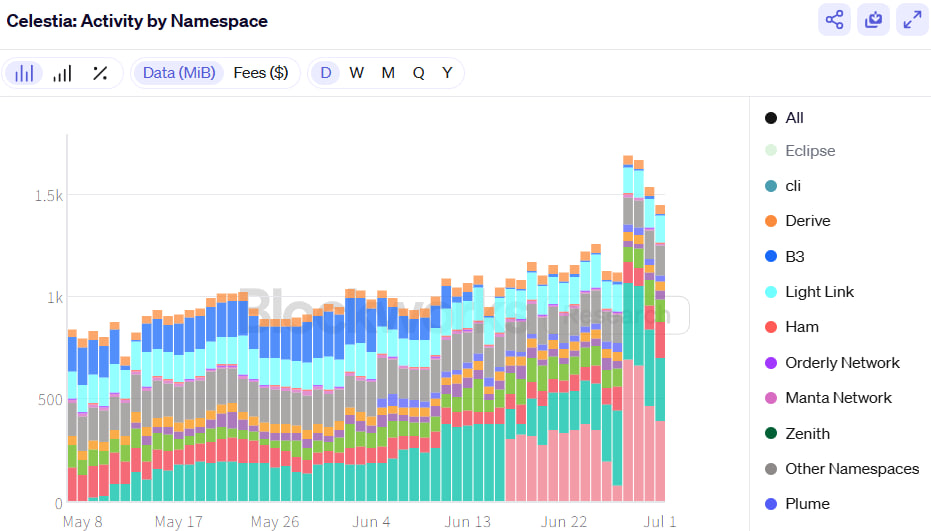
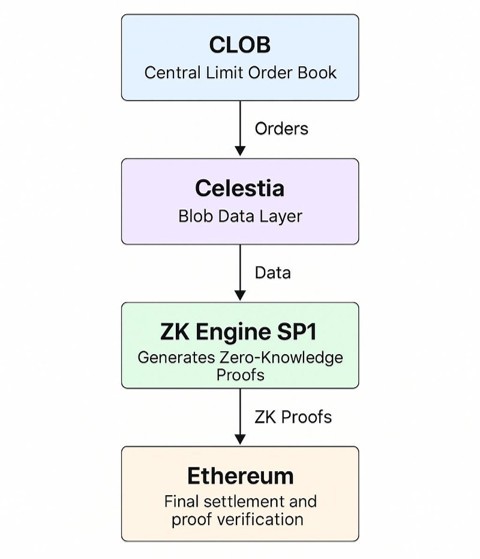
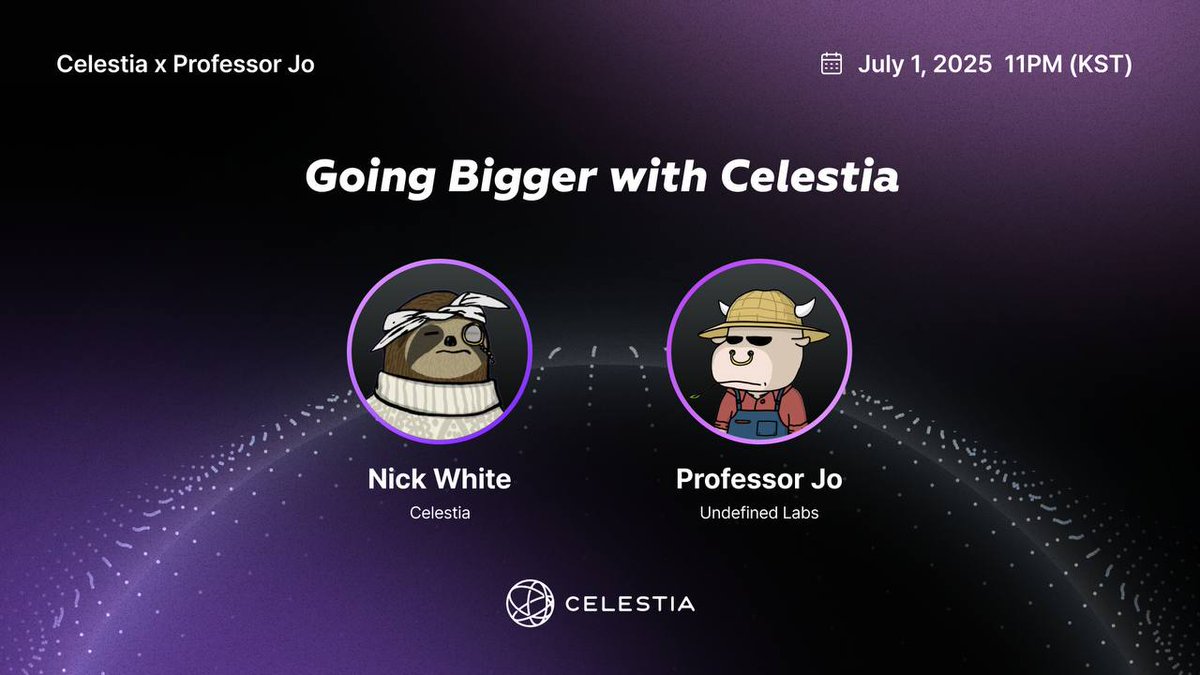
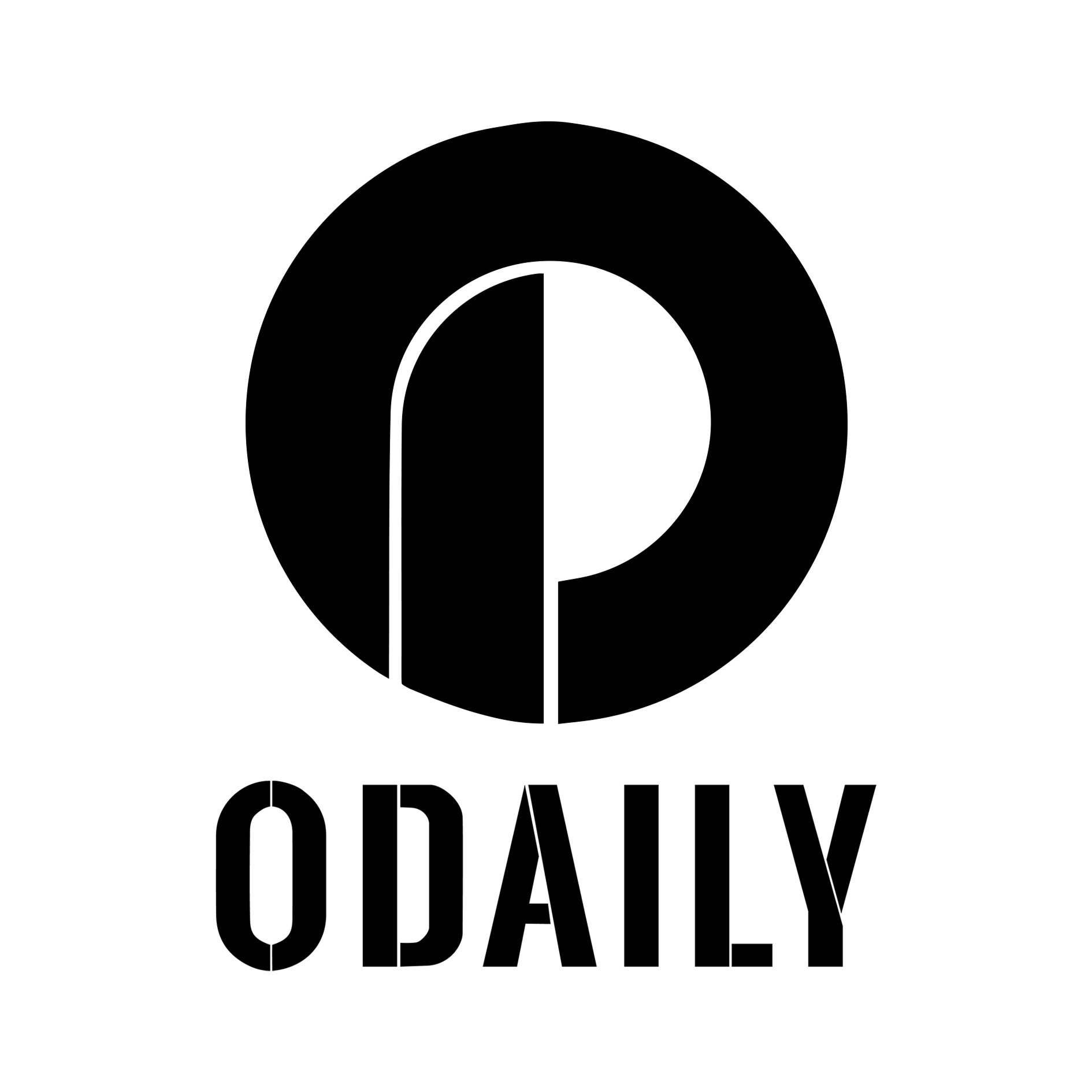
За токенізацією акцій США: повернення до наративу чи сигнал для еволюції фінансових структур Web3?
Нещодавно, коли я відкрив Twitter, на екрані було повно токенізації американських акцій. Не буде перебільшенням сказати, що якщо ви не обговорювали це останні кілька днів, це, ймовірно, означає, що ви втратили зв'язок з ринком.
"Американські акції в ланцюжку" є найбільшою гарячою точкою на ринку цього тижня. Robinhood запустила сервіс токенізації акцій у Європі, а xStocks також запустили на Kraken та Bybit. Solana DEX та екосистема Arbitrum почали розміщувати AAPLx, TSLAx та інші торгові пари, і швидко було розгорнуто новий набір наративів, таких як токенізація акцій.
Але якщо ви бачите тільки тепло і не розумієте структуру, то ви можете стати цибулею-пореєм у цій розповіді.
На мій погляд, токенізація акцій – це не по суті «токен», а стрес-тест ончейн-фінансів:
Чи дійсно світ Web3 може розміщувати випуск, торгівлю, ціноутворення та погашення основних фінансових активів?
Це не спека, а структурний стрес-тест ончейн-фінансів
З моєї точки зору, наш галузевий наратив постійно розвивається циклічно. Ще у 2019 році і Binance, і FTX намагалися токенізувати акції США, але обидва зрештою були закриті регуляторами. Mirror Protocol, яка використовувала синтетичні активи для моделювання цін на акції США, також загинула під час краху Terra та регулювання SEC. Це не нова річ, але індустрія на той момент була не дуже зрілою.
І сьогоднішня токенізація акцій - це не безрозсудний експеримент, а шлях відповідності, який ведуть ліцензовані установи, такі як Robinhood і Backed Finance. Це критичний вододіл.
Беручи за приклад Robinhood, сервіс токенізації акцій, який він запустив у Європі цього разу, пішов безпрецедентним замкнутим шляхом «володіння брокером + випуск у мережі».
Замість того, щоб просто вказувати ціну в ланцюжку, Robinhood самостійно ліцензується в ЄС, купуючи реальні акції США та випускаючи токени 1:1 у мережі. Від зберігання, видачі до клірингу та розрахунків, а також взаємодії з користувачем, весь процес пов'язаний, а торговий досвід в основному близький до комбінації рахунок цінних паперів + гаманець.
На ранньому етапі вони розгорнули ці токени на Arbitrum, щоб забезпечити контроль швидкості та вартості транзакцій у мережі, а пізніше планували перейти на самостійно побудований Robinhood Chain, що означає, що вся інфраструктура також має контролюватися самостійно.
Хоча право голосу поки що не може бути відкрито, оскільки необхідно уникнути нагляду за управлінням, загальну структуру вже можна побачити на прототипі: це схоже на створення майже незалежної «системи торгівлі цінними паперами в ланцюжку» на структурному рівні.
Для криптоіндустрії це перший раз, коли можна побачити традиційну онлайн-брокерську компанію, яка не тільки має автономію на стороні випуску, але й провела деконструкцію ончейн-структури активів.
Від необдуманих судових процесів до закриття комплаєнсу
Цей раунд токенізації акцій не випадковий, як я вже повторював раніше. По суті, кілька основних змінних резонують в один і той же момент часу. Так званий правильний час, місце і люди, напевно, все.
Перш за все, це ослаблення нормативного рівня і чіткість напрямку. Наприклад, MiCA в Європі офіційно приземлилася, а SEC в США перестала сліпо стріляти з молотка і почала випускати якісь сигнали, про які «можна говорити і можна робити».
Robinhood змогла так швидко запустити свій сервіс токенів акцій у ЄС завдяки ліцензії на цінні папери в Литві; Той факт, що xStocks пов'язана як з Kraken, так і з Bybit, також невіддільний від структур відповідності, які компанія побудувала в Швейцарії та Джерсі.
У той же час, оскільки фонди в мережі дійсно шукають нові активи для експорту, структура фондів на ринку змінилася. Розрив між традиційними фінансовими ринками та криптовалютними ринками без MEME лише зменшуватиметься.
Якщо подивитися на сьогодення, то в ланцюжку є купа проєктів, які не мають фундаментальних показників, але мають надвисокий FDV, і ліквідності там нікуди подітися, а стабільні фонди також почали знаходити «якірні та логічні» точки розподілу активів. У цей час звичайні армії, такі як Robinhood і xStocks, приходять з відповідними структурами і торговим досвідом, а біржові токени стають привабливими. Він знайомий, він стабільний, у нього є наративний простір, а також він прив'язаний до стейблкоїнів і DeFi.
Поєднання TradFi і Crypto проникало все глибше і глибше. Від BlackRock до JPMorgan Chase, від UBS до MAS традиційні фінансові гіганти вже не стоять осторонь, а дійсно будують ланцюжки, запускають пілоти та займаються інфраструктурою. Як найбільш поширений і впізнаваний актив, акції, очевидно, стануть кращим вибором для токенізації.
Ончейн традиційних активів – це можливість для криптовалют чи загроза для проєктів?
Суб'єктивна думка Цзяї:
Забігаючи наперед, токенізація акцій, швидше за все, не буде вибухонебезпечною кривою зростання, але вона має потенціал стати дуже стійким шляхом еволюції інфраструктури у світі Web3.
Важливість цього наративу полягає в тому, що він призвів до двох важливих структурних змін: по-перше, межі активів почали по-справжньому мігрувати в ончейн, а по-друге, традиційна фінансова система готова використовувати ончейн-метод для організації частини транзакцій і процесу зберігання. Ці дві речі, одного разу встановлені, є незворотними.
Отже, добре чи погано для акцій поспішати за ліквідністю криптопроєкту?
На мій погляд, це типова палиця з двома кінцями. Він приносить активи вищої якості, але також тонко переписує структуру потоку коштів у ланцюжку.
Спереду:
1. Входження «блакитних фішок» в традиційні фінанси дало нові місця для ончейн-фондів, а також додало деякі варіанти розміщення «стабільних активів». На ринку, де наратив обертається занадто швидко, а кошти рухаються протягом тривалого часу, такого роду активи з чіткою структурою та реалістичними точками прив'язки насправді допомагають ліквідності відновити базові координати «де розподілити та де зіставити».
2. У той же час це також призведе до «ефекту сома». Як тільки з'явився сильний наративний актив токенізації акцій США, було піднято планку всього ланцюжка, що неминуче підштовхне загальну якість проєктів Web3 вгору. Давайте просто дозволимо сміттєвому проекту витіснити з ринку, в моєму серці.
3. Криптогравці можуть безпосередньо купувати акції у формі Cypto Native, що зменшує висмоктування ліквідності великого пулу Crypto американськими акціями
Але подивіться на це з іншого боку:
1. Це також чинить тиск на крипто-нативні проекти. Мало того, що наратив буде пограбований, так ще й структура капіталу та вподобання користувачів у мережі також будуть повільно змінюватися. Особливо, коли токенізовані акції стануть ліквідними та почнуть здійснювати перп, кредитування та розподіл портфелю, вони будуть безпосередньо конкурувати з нативними активами за трафік стейблкоїнів, основних користувачів та увагу в мережі.
2. Для сторони проекту: буде складно отримати фінансування. Коли є AAPLx, TSLAx, а в майбутньому в пулі ончейн активів з'являються токенізовані приватні інвестиції від OpenAI або SpaceX. Інтуїтивні судження інвесторів і користувачів про те, «в що варто інвестувати» і «що має якір ціноутворення», мігрують.
Токенізація акцій змушує нас переосмислити: чи є Web3 системою, яка може нести основні активи та реальну торгову поведінку? Чи можемо ми використовувати відкриту фінансову структуру для перебудови системи цінних паперів з меншими труднощами та більшою прозорістю, ніж традиційний ринок?

чудова стаття про минуле, сьогодення та майбутнє Celestia
Коли говорить професор, треба слухати!

Professor Jo 🐙
<CLOBs on Blobs 🦣 and Celestia’s Comeback>
In the second half of 2023, modular blockchains and rollups were at the center of crypto’s dominant narrative. However, as time passed, the narrative lost momentum due to a lack of users and decreasing transaction activity. Celestia’s blobspace also remained underutilized for a period. But things are changing again.
A new narrative, “CLOBs on Blobs,” is driving real demand for Celestia’s data availability (DA) layer—not just hype, but actual on-chain traffic. I sat down with Nick White from @celestia, to discuss their long-term vision, technical philosophy, and the structural changes behind this renewed momentum.
1. Celestia’s Core Principle: Verifiability
Throughout the interview, @nickwh8te emphasized that “the essence of blockchain is verifiability.” DA is not just about storing data—it's a foundational component that ensures blockchain security. Celestia was designed so that anyone can independently verify data, relying not on centralized structures like DACs (Data Availability Committees), but instead on Data Availability Sampling (DAS).
To clarify: DACs rely on a small group of servers to store off-chain data and sign off on its availability. In contrast, DAS allows data to be verified via random sampling, without requiring high bandwidth or powerful hardware. This concept was introduced in a 2018 paper co-authored by Celestia co-founder Mustafa Al-Bassam and Ethereum’s Vitalik Buterin—and Celestia is the first project to bring it to mainnet.
2. Rollups Aren’t Dead—Real Demand Is Emerging
Interest in rollups faded by late 2023. As blob usage on Celestia declined, many began to question whether the rollup thesis was over. Nick countered this sentiment by referencing the Gartner Hype Cycle: "Every technology goes through a phase of disillusionment." Celestia, he said, is now entering the early stage of actual adoption.
He pointed to a growing trend. Traditional financial institutions and crypto exchanges are expanding into on-chain trading. Robinhood launched tokenized stock trading on @arbitrum, Coinbase introduced its L2 chain Base, Kraken unveiled Ink, and Worldcoin launched World Chain—all of them rollup-based. As these platforms scale, demand for a robust DA layer like Celestia becomes increasingly critical.
Nick noted that rollups offer what general-purpose L1s cannot: low latency, customizable execution environments, and independent economic models. These advantages require strong DA infrastructure to maintain performance and trust—which is precisely where Celestia fits in.
Nick also shared a compelling vision for Celestia’s long-term revenue model. While it currently generates income through DA fees, he emphasized that future value will come from shared revenue with rollup execution layers. As native rollups on Celestia proliferate and build their own execution environments, a portion of the economic activity they generate could be shared with the DA layer itself—similar to how Solana captures value from its execution layer.
This approach positions Celestia not just as infrastructure, but as a platform that captures value across the entire rollup ecosystem. Nick highlighted this structural design as a key reason to be optimistic about Celestia’s long-term future—beyond short-term market cycles.
As a prime example, Nick mentioned Robinhood’s tokenized stock rollout as “just the beginning.” While Ethereum DA may be sufficient at first, growing user activity will eventually strain its capacity—opening the door for Celestia to become the go-to alternative. Several TradFi firms are exploring decentralized infrastructure for stocks, options, and derivatives, all of which demand low latency, high throughput, and verifiability. According to Nick, Celestia is best positioned to meet all three.
3. CLOB on Blobs: The Next Wave of Blob Demand
Blob usage on Celestia has surged recently, driven by the emergence of CLOB-based on-chain exchanges. Platforms like Hyperliquid and Hibachi are building decentralized exchanges with performance comparable to centralized ones—including fine-tuned price discovery, low-latency order matching, and complex fee models. These require massive data throughput and can only operate on rollup infrastructure.
Celestia currently offers 1.33 MB/s of DA throughput (roughly equivalent to 10,000 TPS) and is targeting scalability of up to 200,000 TPS through future upgrades. As a result, blob demand has tripled in the past three months. Beyond Hibachi, other CLOB or options-focused rollups like Rise and Derive are also integrating—or actively evaluating—Celestia.
4. Expanding $TIA Utility and Controlling Inflation
Celestia’s native token, $TIA, was initially used solely for paying blob fees. But the upcoming Lotus upgrade (expected in July) will significantly expand its utility. With Hyperlane bridging support, $TIA will become transferable across other chains like Ethereum and Solana, enabling its use as a yield-bearing asset within DeFi.
Celestia is also addressing concerns around token inflation. The current 7% annual inflation rate is set to drop to 5%, then eventually 4%, with a long-term target of 2.5% under a proposed “Proof of Governance” model. Additionally, most VC tokens will be fully unlocked by November 2025, which should ease long-term supply pressure.
5. From Technology to Demand-Driven Proof
What became clear through this interview is that Celestia is no longer just a technology story—it’s now about real demand. As on-chain exchanges scale, blob usage rises. If revenue-sharing from execution layers materializes, Celestia’s REV (Real Economy Value) will grow significantly. In short, the project is approaching a point where its tech and vision may soon be validated by numbers.
While some near-term supply concerns remain due to upcoming token unlocks, the broader picture is becoming more favorable. With inflation being adjusted and $TIA entering DeFi, it’s becoming easier to imagine a more robust and sustainable Celestia ecosystem on the horizon.




<CLOBs on Blobs 🦣 and Celestia’s Comeback>
In the second half of 2023, modular blockchains and rollups were at the center of crypto’s dominant narrative. However, as time passed, the narrative lost momentum due to a lack of users and decreasing transaction activity. Celestia’s blobspace also remained underutilized for a period. But things are changing again.
A new narrative, “CLOBs on Blobs,” is driving real demand for Celestia’s data availability (DA) layer—not just hype, but actual on-chain traffic. I sat down with Nick White from @celestia, to discuss their long-term vision, technical philosophy, and the structural changes behind this renewed momentum.
1. Celestia’s Core Principle: Verifiability
Throughout the interview, @nickwh8te emphasized that “the essence of blockchain is verifiability.” DA is not just about storing data—it's a foundational component that ensures blockchain security. Celestia was designed so that anyone can independently verify data, relying not on centralized structures like DACs (Data Availability Committees), but instead on Data Availability Sampling (DAS).
To clarify: DACs rely on a small group of servers to store off-chain data and sign off on its availability. In contrast, DAS allows data to be verified via random sampling, without requiring high bandwidth or powerful hardware. This concept was introduced in a 2018 paper co-authored by Celestia co-founder Mustafa Al-Bassam and Ethereum’s Vitalik Buterin—and Celestia is the first project to bring it to mainnet.
2. Rollups Aren’t Dead—Real Demand Is Emerging
Interest in rollups faded by late 2023. As blob usage on Celestia declined, many began to question whether the rollup thesis was over. Nick countered this sentiment by referencing the Gartner Hype Cycle: "Every technology goes through a phase of disillusionment." Celestia, he said, is now entering the early stage of actual adoption.
He pointed to a growing trend. Traditional financial institutions and crypto exchanges are expanding into on-chain trading. Robinhood launched tokenized stock trading on @arbitrum, Coinbase introduced its L2 chain Base, Kraken unveiled Ink, and Worldcoin launched World Chain—all of them rollup-based. As these platforms scale, demand for a robust DA layer like Celestia becomes increasingly critical.
Nick noted that rollups offer what general-purpose L1s cannot: low latency, customizable execution environments, and independent economic models. These advantages require strong DA infrastructure to maintain performance and trust—which is precisely where Celestia fits in.
Nick also shared a compelling vision for Celestia’s long-term revenue model. While it currently generates income through DA fees, he emphasized that future value will come from shared revenue with rollup execution layers. As native rollups on Celestia proliferate and build their own execution environments, a portion of the economic activity they generate could be shared with the DA layer itself—similar to how Solana captures value from its execution layer.
This approach positions Celestia not just as infrastructure, but as a platform that captures value across the entire rollup ecosystem. Nick highlighted this structural design as a key reason to be optimistic about Celestia’s long-term future—beyond short-term market cycles.
As a prime example, Nick mentioned Robinhood’s tokenized stock rollout as “just the beginning.” While Ethereum DA may be sufficient at first, growing user activity will eventually strain its capacity—opening the door for Celestia to become the go-to alternative. Several TradFi firms are exploring decentralized infrastructure for stocks, options, and derivatives, all of which demand low latency, high throughput, and verifiability. According to Nick, Celestia is best positioned to meet all three.
3. CLOB on Blobs: The Next Wave of Blob Demand
Blob usage on Celestia has surged recently, driven by the emergence of CLOB-based on-chain exchanges. Platforms like Hyperliquid and Hibachi are building decentralized exchanges with performance comparable to centralized ones—including fine-tuned price discovery, low-latency order matching, and complex fee models. These require massive data throughput and can only operate on rollup infrastructure.
Celestia currently offers 1.33 MB/s of DA throughput (roughly equivalent to 10,000 TPS) and is targeting scalability of up to 200,000 TPS through future upgrades. As a result, blob demand has tripled in the past three months. Beyond Hibachi, other CLOB or options-focused rollups like Rise and Derive are also integrating—or actively evaluating—Celestia.
4. Expanding $TIA Utility and Controlling Inflation
Celestia’s native token, $TIA, was initially used solely for paying blob fees. But the upcoming Lotus upgrade (expected in July) will significantly expand its utility. With Hyperlane bridging support, $TIA will become transferable across other chains like Ethereum and Solana, enabling its use as a yield-bearing asset within DeFi.
Celestia is also addressing concerns around token inflation. The current 7% annual inflation rate is set to drop to 5%, then eventually 4%, with a long-term target of 2.5% under a proposed “Proof of Governance” model. Additionally, most VC tokens will be fully unlocked by November 2025, which should ease long-term supply pressure.
5. From Technology to Demand-Driven Proof
What became clear through this interview is that Celestia is no longer just a technology story—it’s now about real demand. As on-chain exchanges scale, blob usage rises. If revenue-sharing from execution layers materializes, Celestia’s REV (Real Economy Value) will grow significantly. In short, the project is approaching a point where its tech and vision may soon be validated by numbers.
While some near-term supply concerns remain due to upcoming token unlocks, the broader picture is becoming more favorable. With inflation being adjusted and $TIA entering DeFi, it’s becoming easier to imagine a more robust and sustainable Celestia ecosystem on the horizon.



Показники ціни Robinhood у USD
Поточна ціна steal-from-the-rich становить $0,00019778. За останні 24 години для steal-from-the-rich спостерігалося збільшується на +9,36%. Наразі циркулююча пропозиція становить 1 000 000 008 Robinhood, а максимальна — 1 000 000 008 Robinhood, що дає повністю розбавлену ринкову капіталізацію в розмірі $203,93 тис.. Ціна steal-from-the-rich/USD оновлюється в режимі реального часу.
5 хв
-24,27%
1 г
+204,70%
4 г
+9,36%
24 г
+9,36%
Про Steal from the rich (Robinhood)
Robinhood — FAQ
Яка поточна ціна Steal from the rich ?
Поточна ціна 1 Robinhood становить $0,00019778, вона змінилася на +9,36% за останні 24 години.
Чи можна купити Robinhood на OKX?
Ні, наразі Robinhood недоступні на OKX. Щоб дізнатися, коли Robinhood стануть доступними, підпишіться на сповіщення або стежте за нами в соціальних мережах. Ми оголосимо про додані криптовалюти, щойно вони з’являться в списку.
Чому ціна Robinhood коливається?
Ціна Robinhood коливається через глобальну динаміку попиту та пропозиції, типову для криптовалют. Їх короткострокову волатильність можна пояснити значними змінами в цих ринкових силах.
Скільки сьогодні коштує 1 Steal from the rich?
Наразі один Steal from the rich коштує $0,00019778. Якщо вам цікава динаміка цін Steal from the rich — ви потрапили в потрібне місце. Слідкуйте за графіками Steal from the rich і торгуйте відповідально з OKX.
Що таке криптовалюта?
Криптовалюти, як-от Steal from the rich, є цифровими активами, які працюють на основі публічного реєстру, що називається блокчейн. Дізнайтеся більше про монети й токени на OKX і їх атрибути, зокрема ціни та графіки в режимі реального часу.
Коли була винайдена криптовалюта?
Через фінансову кризу 2008 року інтерес до децентралізованих фінансів різко зріс. Bitcoin став новим безпечним цифровим активом у децентралізованій мережі. З того часу було створено багато інших токенів, як-от Steal from the rich.

